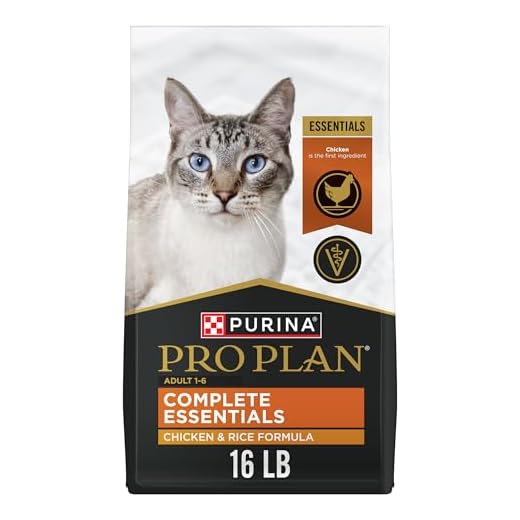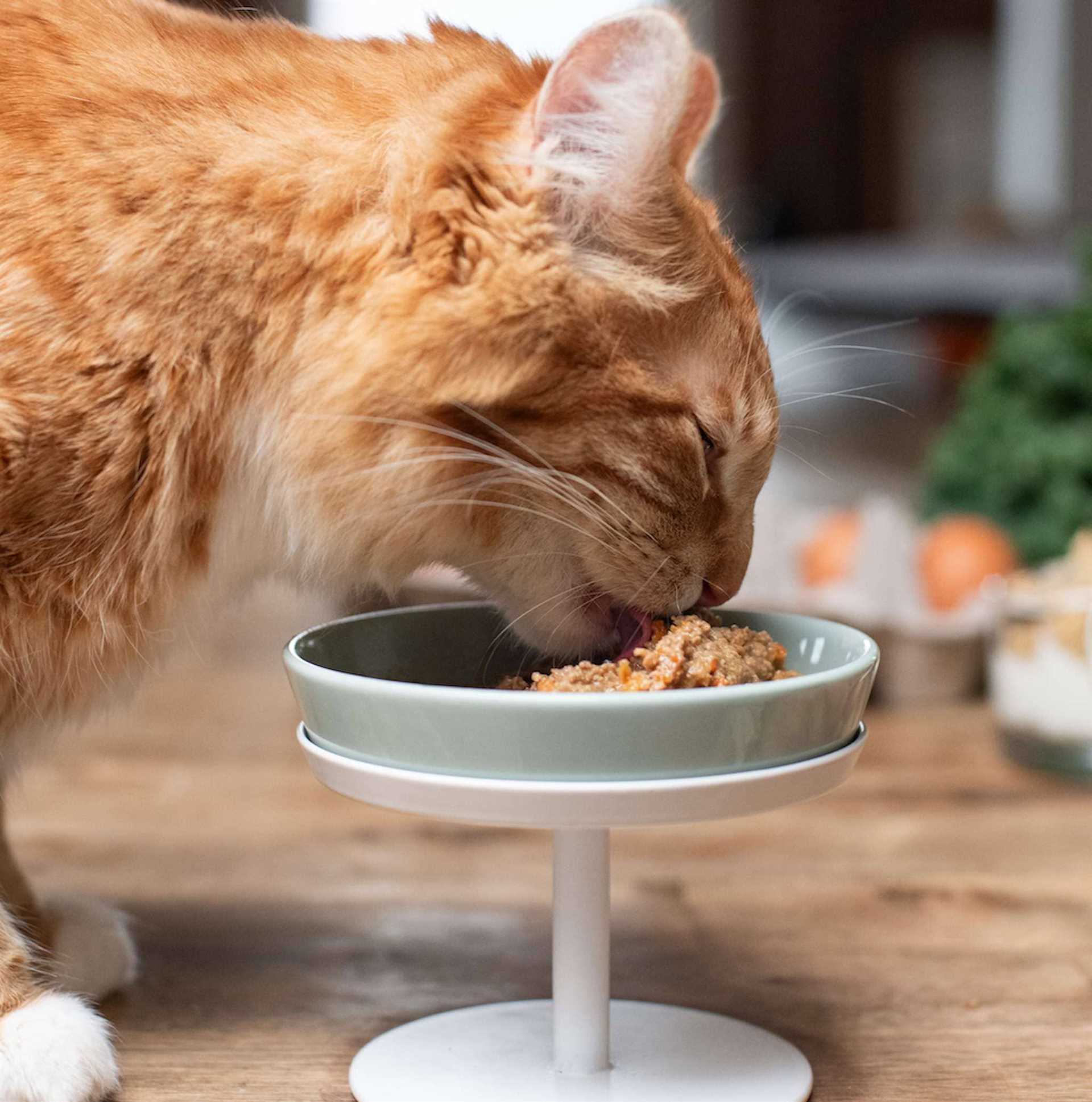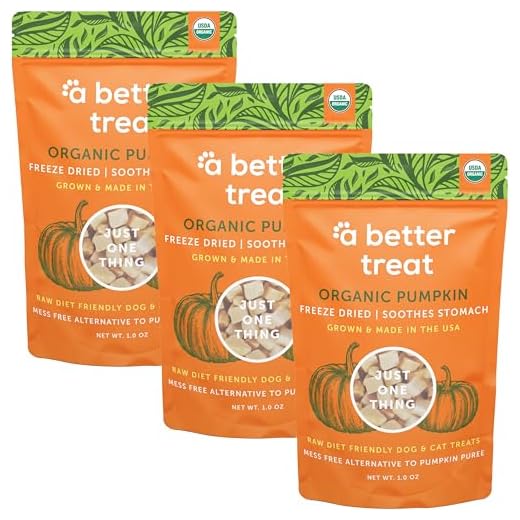




Choosing the right diet can significantly enhance the well-being of your furry companion experiencing gastrointestinal discomfort. Selecting easily digestible proteins, such as turkey or chicken, and incorporating high-quality fibers can alleviate symptoms and promote better digestion.
This article provides a detailed overview of suitable meal options, including specific ingredients and formulations that support gut health. It is designed for pet owners seeking to improve their pets’ nutrition and overall comfort.
Within the text, I outline various dietary strategies, including the benefits of wet versus dry meals, the importance of probiotics, and the role of limited-ingredient diets. Each recommendation is backed by research, ensuring you have the best information at hand to make informed choices for your pet’s health.
Best Nutrition Choices for Felines Experiencing Stomach Discomfort
Choosing the right nutrition for pets suffering from stomach discomfort is essential for their well-being. A diet rich in high-quality proteins and low in fillers can significantly alleviate symptoms and promote healthy digestion.
Look for options that contain easily digestible ingredients. This may include specific animal proteins, such as chicken or fish, along with carbohydrates like sweet potatoes or pumpkin, which are known to soothe the gastrointestinal tract.
Key Ingredients to Consider
- Limited Ingredients: Formulas with fewer components can reduce the risk of allergies and sensitivity.
- High Fiber: Fiber aids in regulating digestion. Ingredients like beet pulp or psyllium can be beneficial.
- Probiotics: These beneficial bacteria support gut health and help restore balance.
- Omega Fatty Acids: Sources of omega-3 and omega-6 fatty acids can promote a healthy coat and skin, which is often affected by digestive issues.
When selecting a specific type of nourishment, consider consulting a veterinarian. They can recommend appropriate dietary adjustments based on the unique needs of the animal. Regular monitoring of the pet’s condition can help determine the effectiveness of the chosen diet.
Additionally, transitioning to a new diet should be gradual to prevent further gastrointestinal upset. Mixing small amounts of the new nutrition with the current one over several days can help ease this shift.
Identifying Digestive Problems in Felines
Monitoring behavior and physical signs is essential for recognizing gastrointestinal complications in your pet. Observing changes in eating habits, stool consistency, and general activity level can provide key insights.
Common symptoms include vomiting, diarrhea, constipation, and excessive gas. Note any alterations in appetite, such as reluctance to eat or sudden overeating. Additionally, weight loss or a bloated abdomen may indicate underlying concerns.
Key Signs to Watch For
- Frequent vomiting or regurgitation
- Changes in stool quality, including color and texture
- Loss of appetite or sudden increase in hunger
- Unusual lethargy or decreased activity
- Weight loss or gain without a change in diet
If you notice any of these signs, it is advisable to consult a veterinarian. They can perform a thorough examination and recommend appropriate diagnostics or treatments tailored to your pet’s needs.
Key Nutrients for Sensitive Stomachs
Providing the right nutrients can significantly improve gastrointestinal health in felines. Focus on easily digestible proteins, fiber sources, and beneficial additives to support optimal digestion.
Proteins such as chicken or fish are excellent choices as they provide essential amino acids while being gentle on the stomach. Additionally, including hydrolyzed proteins can help reduce allergic reactions and sensitivities.
Digestive Aids and Fiber
Incorporating specific types of fiber can aid in regulating bowel movements and enhancing gut health. Soluble fibers like beet pulp and psyllium can support stool consistency.
- Prebiotics: These promote beneficial bacteria in the gut, contributing to a healthy microbiome.
- Probiotics: Live microorganisms that can help restore the balance of gut flora, improving digestion.
Moreover, choosing ingredients that are low in fat can help minimize digestive workload. Grain-free options may also be beneficial for those with sensitivities to certain grains.
Hydration and Nutritional Balance
Maintaining proper hydration is key. Wet options can provide additional moisture, aiding in digestion and nutrient absorption.
| Nutrient | Benefit |
|---|---|
| Protein | Supports muscle maintenance and overall health. |
| Fiber | Helps regulate digestion and prevent constipation. |
| Probiotics | Enhances gut health and nutrient absorption. |
In summary, focusing on easily digestible proteins, appropriate fiber sources, and hydration can greatly assist in supporting a healthy digestive system. Tailoring dietary choices to individual needs will promote overall well-being.
Recommended Commercial Diets for Cats
Choosing the right commercial diets can significantly improve the well-being of felines experiencing gastrointestinal problems. Look for formulations that contain easily digestible proteins, such as chicken or fish, and avoid those with unnecessary fillers like corn or wheat.
Additionally, consider options that incorporate prebiotics and probiotics to support a healthy gut flora. These ingredients can enhance nutrient absorption and promote regularity, reducing discomfort associated with digestive disturbances.
Key Ingredients to Look For
- High-quality proteins: Easily digestible sources that minimize strain on the digestive system.
- Low fiber content: Helps in reducing the workload on the intestines.
- Probiotics: Beneficial bacteria that foster digestive health.
- Prebiotics: Components that feed good bacteria, aiding in balance and function.
When selecting specific products, it may be beneficial to consult with a veterinarian. They can recommend suitable options based on the unique needs of each individual.
Considerations for Transitioning Diets
Transitioning to a new diet should be done gradually. Start by mixing small amounts of the new formulation with the current one, progressively increasing the ratio over several days. This approach minimizes the risk of further digestive disturbances.
Monitoring your feline’s response during the transition period is crucial. Any signs of discomfort or adverse reactions should prompt immediate consultation with a veterinarian to adjust the dietary plan as necessary.
Homemade Meal Options for Digestive Health
Preparing meals at home can greatly benefit pets experiencing stomach discomfort or gastrointestinal challenges. Focus on simple, wholesome ingredients that are easy to digest. Cooking fresh meals allows for better control over ingredients and can help mitigate symptoms.
Consider incorporating lean proteins such as chicken or turkey, which are generally well-tolerated. Boiling these meats without seasoning is advisable. Adding plain, cooked rice or pumpkin can provide fiber, aiding in regular bowel movements.
Ingredient Suggestions
- Chicken or Turkey: Lean sources of protein that are easy to digest.
- Pumpkin: A natural source of fiber that helps regulate digestion.
- Rice: Plain, white rice can soothe an upset stomach.
- Carrots: Cooked and mashed, they add nutrients and fiber.
- Sweet Potatoes: Another fiber-rich option that is gentle on the stomach.
When preparing meals, ensure all ingredients are thoroughly cooked and avoid any spices or additives. Feeding smaller, more frequent portions can also help alleviate discomfort.
Monitor your pet’s response to homemade meals. If symptoms persist, consult a veterinarian for tailored advice and further evaluation.
Importance of Fiber in Cat Diets
Incorporating an adequate amount of fiber into a feline’s nutrition can significantly alleviate various gastrointestinal discomforts. This nutrient plays a key role in promoting healthy digestion by regulating bowel movements and preventing constipation.
Fiber can also aid in managing weight, as it helps to increase satiety without adding extra calories. This is particularly beneficial for overweight animals who may struggle with mobility and overall health.
Types of Fiber
There are two primary categories of fiber: soluble and insoluble. Each type serves a unique function in promoting digestive health.
- Soluble Fiber: This type absorbs water and forms a gel-like substance in the intestines. It can help slow digestion, allowing for better nutrient absorption. Sources include oats and peas.
- Insoluble Fiber: This type adds bulk to the stool and promotes regular bowel movements. It’s crucial for preventing constipation and is found in ingredients like wheat bran and vegetables.
Both types are beneficial, but a balance tailored to the specific needs of each animal is recommended. Consulting with a veterinarian can help determine the right fiber content based on an individual’s health status.
Fiber-Rich Ingredients
Incorporating fiber-rich components into a feline’s meals can be achieved through various natural sources. Common options include:
- Pumpkin puree
- Sweet potatoes
- Carrots
- Green beans
These ingredients not only provide fiber but also deliver essential vitamins and minerals that support overall health.
Monitoring and Adjusting Fiber Intake
Regularly assessing a feline’s response to increased fiber intake is crucial. Signs of improvement can include more regular bowel movements and increased energy levels. However, sudden changes in diet should be avoided to prevent gastrointestinal upset.
A gradual introduction of fiber is advisable, allowing the digestive system to adapt smoothly. Regular consultations with a veterinarian can provide guidance on optimizing fiber levels for enhanced well-being.
Tips for Transitioning to New Foods
Introduce the new diet gradually over a week to minimize gastrointestinal upset. Begin by mixing a small amount of the new product with the current meal, gradually increasing the proportion of the new option while decreasing the old one.
Monitor your pet’s reaction closely during this transition. If any signs of distress occur, such as vomiting or diarrhea, slow down the process. Return to the previous diet for a few days before attempting to reintroduce the new option.
Transition Steps
- Day 1-2: Mix 25% of the new option with 75% of the current meal.
- Day 3-4: Adjust to 50% new and 50% old.
- Day 5-6: Shift to 75% new and 25% old.
- Day 7: Serve 100% of the new option.
Keep an eye on hydration levels, as changes in diet can affect water intake. Ensure that fresh water is always available.
Consult with a veterinarian if any persistent issues arise during the transition, or if your pet has specific dietary needs.
Final Tips:
- Be patient and allow your pet to adjust at their own pace.
- Consider serving smaller, more frequent meals to ease digestion.
- Maintain a consistent feeding schedule to create a sense of routine.
Best food for cats with digestive issues
Features
| Part Number | 604200 |
| Model | 604200 |
| Warranty | 100% statisfaction, or your money back |
| Color | White |
| Release Date | 2019-08-31T00:00:01Z |
| Size | 8.5 Pound (Pack of 1) |
Features
| Part Number | 18166315 |
| Model | 444207 |
| Warranty | With nearly 50 years of scientific research and observation, Royal Canin continues to deliver targeted nutrition to feed every pet’s magnificence. Not satisfied? Then neither are we. Our formulas are 100% satisfaction guaranteed. (Just contact us for more details.) |
| Size | 6 Pounds (Pack of 1) |
Features
| Part Number | 038100131546 |
| Model | 13154 |
| Warranty | Purina guarantees outstanding quality and taste. If for any reason you’re not satisfied, simply let Purina know why. Please contact Purina directly at (800) 778-7462 within 60 days of date on receipt for assistance. Or, feel free to mail your original purchase receipt with the price circled, a brief explanation of why you were dissatisfied with our products, the “Best If Used By” date box from the package, along with your name and street address (P.O. Box not accepted) to: Purina, Consumer Services, PO Box 340, Neenah WI 54957 |
| Release Date | 2022-02-24T00:00:01Z |
| Size | 16 Pound (Pack of 1) |
| Publication Date | 2011-12-21T00:00:01Z |
Features
| Part Number | RC471550 |
| Model | RC471550 |
| Warranty | With nearly 50 years of scientific research and observation, Royal Canin continues to deliver targeted nutrition to feed every pet’s magnificence. Not satisfied? Then neither are we. Our formulas are 100% satisfaction guaranteed. (Just contact us for more details.) |
| Size | 3 Ounce (Pack of 24) |
Features
| Part Number | 604202 |
| Model | 604202 |
| Warranty | 100% statisfaction, or your money back |
| Color | White |
| Is Adult Product | |
| Release Date | 2019-08-31T00:00:01Z |
| Size | 2.9 Ounce (Pack of 24) |
Features
| Color | Orange |
| Size | 1 Ounce (Pack of 3) |
Video:
FAQ:
What are the best types of food for cats with digestive issues?
Cats with digestive issues benefit from easily digestible foods. Look for high-quality, grain-free options that contain limited ingredients. Proteins like chicken or fish are often gentle on the stomach. Additionally, consider wet food, as it provides moisture and can be easier for cats to digest than dry kibble. Specialized diets formulated for sensitive stomachs are also available and can be beneficial.
How can I identify if my cat has digestive problems?
Signs that your cat may have digestive issues include vomiting, diarrhea, constipation, or changes in appetite. You might also notice that your cat is more lethargic than usual or has a bloated abdomen. If you observe any of these symptoms, it is important to consult a veterinarian for a proper diagnosis and treatment plan.
Is it safe to change my cat’s food if they have digestive issues?
Switching your cat’s food can be safe, but it should be done gradually. Sudden changes can exacerbate digestive issues. Start by mixing a small amount of the new food with the current food, gradually increasing the new food over several days. Monitor your cat for any adverse reactions during this transition. If problems persist, consult your veterinarian for advice on the best diet for your cat’s specific needs.
Can I give my cat homemade food to help with digestive issues?
Homemade food can be a good option for some cats with digestive problems, but it is crucial to ensure that the diet is balanced and meets all of your cat’s nutritional needs. Consult with a veterinarian or a pet nutritionist before making homemade meals to avoid deficiencies. Common ingredients that are gentle on the stomach include boiled chicken, pumpkin, and rice. Always introduce any new food gradually and monitor your cat’s response.










